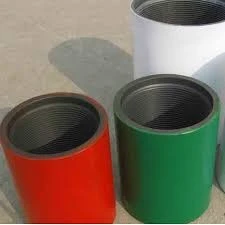- Afrikaans
- Albanian
- Amharic
- Arabic
- Armenian
- Azerbaijani
- Basque
- Belarusian
- Bengali
- Bosnian
- Bulgarian
- Catalan
- Cebuano
- Corsican
- Croatian
- Czech
- Danish
- Dutch
- English
- Esperanto
- Estonian
- Finnish
- French
- Frisian
- Galician
- Georgian
- German
- Greek
- Gujarati
- Haitian Creole
- hausa
- hawaiian
- Hebrew
- Hindi
- Miao
- Hungarian
- Icelandic
- igbo
- Indonesian
- irish
- Italian
- Japanese
- Javanese
- Kannada
- kazakh
- Khmer
- Rwandese
- Korean
- Kurdish
- Kyrgyz
- Lao
- Latin
- Latvian
- Lithuanian
- Luxembourgish
- Macedonian
- Malgashi
- Malay
- Malayalam
- Maltese
- Maori
- Marathi
- Mongolian
- Myanmar
- Nepali
- Norwegian
- Norwegian
- Occitan
- Pashto
- Persian
- Polish
- Portuguese
- Punjabi
- Romanian
- Russian
- Samoan
- Scottish Gaelic
- Serbian
- Sesotho
- Shona
- Sindhi
- Sinhala
- Slovak
- Slovenian
- Somali
- Spanish
- Sundanese
- Swahili
- Swedish
- Tagalog
- Tajik
- Tamil
- Tatar
- Telugu
- Thai
- Turkish
- Turkmen
- Ukrainian
- Urdu
- Uighur
- Uzbek
- Vietnamese
- Welsh
- Bantu
- Yiddish
- Yoruba
- Zulu
api tubing couplings
Understanding API Tubing Couplings Essential Components for Oil and Gas Industry
API tubing couplings play a vital role in the oil and gas industry. These components, designed according to the American Petroleum Institute (API) standards, are essential for connecting lengths of tubing that transport oil and gas from wells to the surface. This article will explore the significance, specifications, and various types of API tubing couplings used in drilling operations.
Importance of API Tubing Couplings
The primary function of tubing couplings is to ensure a secure connection between different sections of tubing, which is crucial for maintaining the integrity of the system under extreme conditions. Given the high pressures and corrosive environments often encountered in oil and gas extraction, the reliability of these couplings cannot be overstated. A failure in a coupling can lead to severe operational issues, including leaks, which can be both costly and hazardous.
Moreover, API tubing couplings facilitate the efficient transfer of fluids and gases, making them indispensable in the hydrocarbon production process. Their design minimizes turbulence and pressure losses, thereby enhancing the flow rate and overall operational efficiency.
Specifications and Standards
API tubing couplings must adhere to specific standards set forth by the API to ensure safety and performance. These specifications cover various aspects, including material composition, dimensions, and performance characteristics. The most common grades used for manufacturing these couplings include API 5CT and API 5B, which dictate the mechanical properties and metallurgical requirements of the couplings.
Typically, API tubing couplings are produced from carbon steel or other alloys that can withstand the harsh conditions of deep-sea or onshore drilling. The most widely recognized sizes of tubing and their corresponding couplings range from 2-3/8 inches to 4-1/2 inches in diameter, with a variety of wall thicknesses available to accommodate different pressure ratings.
Types of API Tubing Couplings
api tubing couplings

There are several types of API tubing couplings, each designed for specific applications
2. Heavy Wall Couplings These are used in applications where the tubing must withstand higher pressures. The increased wall thickness provides additional strength and resilience.
3. Threaded Couplings These couplings feature male and female threads that ensure a tight fit, making them ideal for environments where vibration and movement occur.
4. Internal Couplings Designed to provide support to the tubing string, internal couplings help in maintaining the alignment and integrity of the system.
5. Premium Couplings These couplings are specially designed for high-performance applications, offering enhanced sealing capabilities and greater resistance to wear and corrosion.
Conclusion
API tubing couplings are an essential component in the oil and gas industry, ensuring the safe and efficient transportation of hydrocarbons. By adhering to strict API standards and employing various designs for different applications, these couplings play a crucial role in the operational integrity of drilling and production operations. Understanding their importance, specifications, and types is vital for professionals in the field, ensuring they select the right components for their specific needs. As technology advances, the development of even more resilient and efficient couplings will continue to enhance the oil and gas extraction process.
-
Tubing Pup Joints: Essential Components for Oil and Gas OperationsNewsJul.10,2025
-
Pup Joints: Essential Components for Reliable Drilling OperationsNewsJul.10,2025
-
Pipe Couplings: Connecting Your World EfficientlyNewsJul.10,2025
-
Mastering Oilfield Operations with Quality Tubing and CasingNewsJul.10,2025
-
High-Quality Casing Couplings for Every NeedNewsJul.10,2025
-
Boost Your Drilling Efficiency with Premium Crossover Tools & Seating NipplesNewsJul.10,2025







